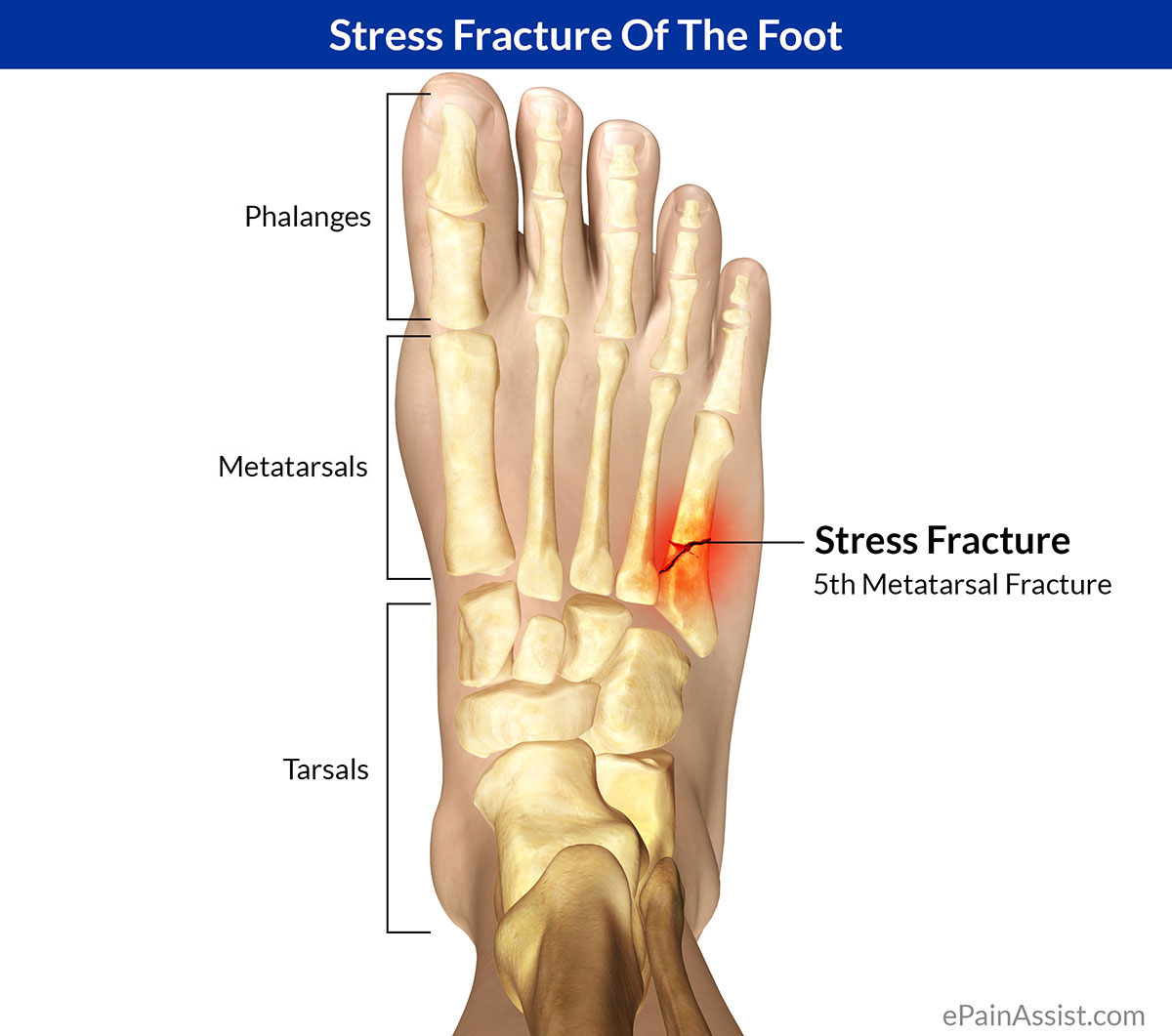A stress fracture occurs from repeated pressure or stress on the bones. It usually occurs in weight bearing bones. Stress fracture occurs due to overuse of the muscles. The capacity to bear repeated impact or stress decreases in the muscles if they are overstrained, this in turn puts more stress on the bones causing small cracks in them which are stress fractures. Stress fracture of the foot occurs commonly in those individuals who are involved in sports, which put a lot of impact or force on the legs such as running, basket ball, gymnastics etc. Athletes commonly suffer from stress fracture in the lower leg and the foot. ‘March Fracture’ is the name given to the fracture, which commonly occurs in the 2nd or 3rd metatarsal bone. Jones Fracture is a stress fracture occurring at the base of the 5th metatarsal and which may require surgical repair.
Causes of Stress Fracture of the Foot
- High impact activities such as playing basket ball or running can cause stress fracture of foot.
- Wearing inappropriate footwear can also cause stress fracture of the foot.
- Running on uneven surfaces.
- Change in training technique.
- Bone disorders such as osteoporosis which make an individual more prone to stress fracture.
- In females, irregular or absent menstrual periods results in decreased bone density. Due to this, female athletes are more prone to stress fracture of foot than male athletes.
Symptoms of Stress Fracture of the Foot
- Pain in the area of fracture or in the fractured leg.
- Increasing pain upon activity which gets relieved with rest is one of the symptoms of stress fracture of the foot.
- Tenderness and swelling is also present with stress fracture of the foot.
- Bruising may also be present.
- Person suffering from stress fracture of the foot often has difficulty in walking.
- Patient suffering from stress fracture of the foot will have Inability to bear weight.
Treatment of Stress Fracture of the Foot
- Consult a sports specialist immediately.
- X-ray of the bone shows fracture only after it has started healing. Due to this reason, MRI or bone scan are more helpful in confirming a fracture.
- Rest should be taken for at least 6 to 8 weeks to get recover from stress fracture of the foot.
- Crutches can be used for support and to avoid complete weight bearing if you have suffered from stress fracture of foot.
- NSAIDs or other pain killers can be given for pain relief from stress fracture of the foot.
- A plaster cast is applied for 2 to 6 weeks.
- Surgery may be required for compound fractures.
- After the stress fracture of the foot has healed, patient should start rehab program comprising of stretching and strengthening exercises to regain mobility, flexibility and range of motion of the leg.
Also Read:

